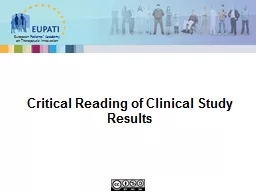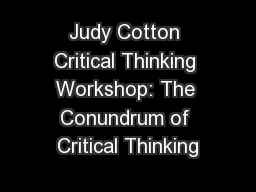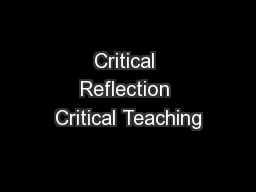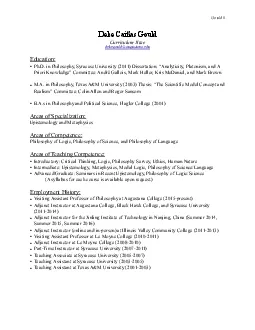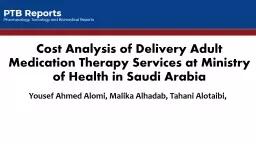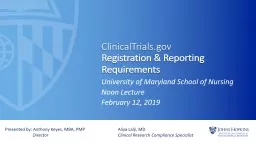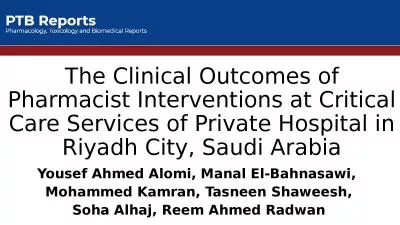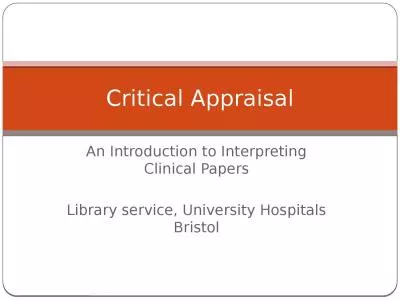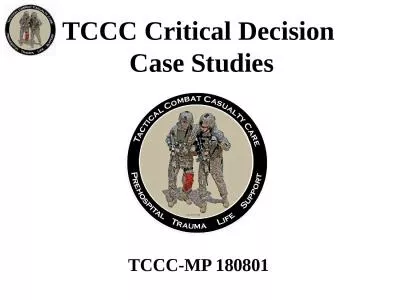PPT-Critical Reading of Clinical Study Results
Author : greyergy | Published Date : 2020-06-16
Clinical study results comprise all the data measures and statistical analyses generated during a clinical study They include a description of the study population
Presentation Embed Code
Download Presentation
Download Presentation The PPT/PDF document "Critical Reading of Clinical Study Resul..." is the property of its rightful owner. Permission is granted to download and print the materials on this website for personal, non-commercial use only, and to display it on your personal computer provided you do not modify the materials and that you retain all copyright notices contained in the materials. By downloading content from our website, you accept the terms of this agreement.
Critical Reading of Clinical Study Results: Transcript
Download Rules Of Document
"Critical Reading of Clinical Study Results"The content belongs to its owner. You may download and print it for personal use, without modification, and keep all copyright notices. By downloading, you agree to these terms.
Related Documents

